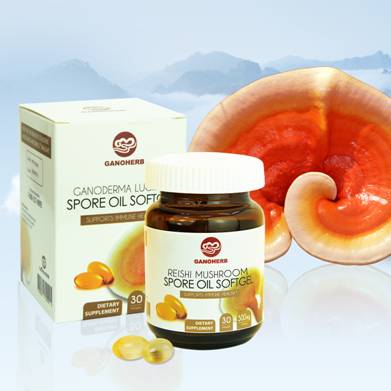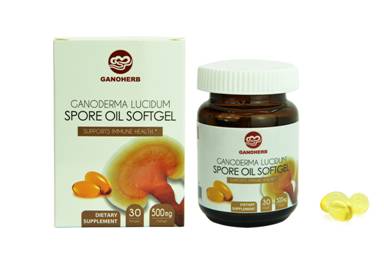V. Pest Control 1. First of all, agriculture, biology and physical control should be used in conjunction with scientific chemical control to achieve the goal of producing pollution-free green onions. The use of high toxicity, high residue, high bio-accumulation, high-risk pesticides and their mixed pesticides prohibited by the State must not be used. 2. Agricultural control and selection of disease-resistant varieties, seed disinfection, adequate base fertilizer application, rational distribution, strengthening of field management, such as rain cultivation, cultivating, reducing air and soil moisture, destroying old leaves, increasing ventilation, reducing surface temperature, and enhancing The plant's resistance to disease, and the implementation of more than two years of rotation, to avoid planting green onions and other wetlands. 3. Chemical control of downy mildew - symptoms of damage: when infected with the disease caused by bulb infection, the diseased plant is atrophic, the deformity of the leaves is distorted and pale green, and diseased leaves or pedicels become infected, resulting in large yellowish white or milky white lesions. Spindle or ellipse, the edge is not obvious, it produces white mold on wet, when the dry spot becomes a stain; when the lower part of the leaf is damaged, the disease above the leaf blade sagging and dry, the plant does not continue to grow new leaves; When the onion pseudostem is victimized, the upper part of the onion grows unevenly, causing it to bend toward the victim side. Control methods: In the early days of Daejeon, use 50% copper formate WP 800-1000 times, or 64% anti-virus WP 500 times spray control, spray once every 7-10 days, even spray 2-3 times. Purple spot - damage symptoms: seedling stage, growth period and seed collection period can be the disease, conidium mainly damage the leaves and pedicels, but also damage the bulb. Lesions usually start at the tip of the leaf or in the middle of the pedicel. The initial lesion is small, gray or light brown, and the center is slightly purple, with black coal dust on it. Lesions expand to oval or spindle-shaped, depressions, dark purple, often forming concentric rings, lesions continue to expand, constant healing and growth of large strips, resulting in dead leaves and peduncles. One week after the lesions around the leaves or pedicels, the leaves or pedicels mostly softened from the disease. Control methods: At the beginning of the disease, use 64% antivirus WP 500 times; 75% chlorothalonil wettable powder 600 times spray. Rust - symptoms of damage: the onset of spring and autumn, damage leaves and calyx. The diseased part first appeared as a small white spot and then the lesions raised, orange to brown. When the disease is serious, the lesions even grow into one affecting growth. When the air humidity is high, the disease becomes severe. Control methods: At the beginning of the disease, 16% triadimefon (triadimefon) wettable powder 1600 times liquid, 10 days once, and sprayed 2-3 times. Hummer - symptoms of damage: dry and little rain, high temperature when the damage is serious. Nymphs and adults not only suck sap and their wounds are also infectious. The worms occur 6-10 generations a year, with severe damage in late spring and early autumn. Control methods: 50% phoxim EC or 2.5% hydrobromide in the larval stage, or 10% net 2000X solution. Onion flies (root locust) - symptoms of damage: larvae damage onion garlic vegetables. Feeding on young leaves and growing points, the affected plants often die due to infected rot or severe damage to the growing point, resulting in defoliation of the ridge. Control method: Use 40% phoxim EC 1000ml, dilute it to 100 times liquid, remove the spray nozzle, aim at the root and fill the medicine. Use diluted liquid 30ml-40ml for each strain, then water it. Liriomyza sativae - control methods: In the spawning period until the initial stage of larvae hatching, spray 2.5% hydropermethrin and 20% hydromethrin 1500-2000 times to control. Six, timely harvest when the outer leaf growth basically stopped, yellow-green leaves, 15-20 days before the soil frozen in the onion harvest period, generally in late October to early November. Shake off the soil after harvesting, properly dry it, bundle it into small bundles, put it in a sunny and dry place and dry it. When the leaf body and the outer leaf tip are a little dry, store it in a cool, dry place. VII. The storage must be carried out under conditions of ventilation, cleanliness, dryness and hygiene. The exposure to sun, rain, freezing and harmful substances must be strictly prevented. Handle with care so as not to injure the product. Scallion suitable for refrigerated temperature of -0.6 °C -3 °C, frozen storage temperature of -5 °C -0 °C, relative humidity of 65% -70%. VIII. Roughing Choose uniform color, uniform thickness, light green onion longer (more than 20cm) onion, on the roughing operation table cut leaves, cut to be, skinning, the obvious inferior onions (bending, rotten leaves, mechanical injury, The pests and diseases were sorted out, sorted by screening, and sealed in vacuum by a vacuum packing machine. 9. Onion powder processing Freeze-dried vegetables refer to vegetables that are dehydrated by sending fresh vegetables into the vacuum vessel after being frozen quickly. The vegetables made by the freeze-drying process not only maintain the fragrant shape of the vegetables, but also store the nutrients such as vitamins and proteins in the vegetables. The vegetables can be processed as long as they are eaten, and they can be restored to fresh vegetables within minutes. Freeze-dried foods do not need to be refrigerated. As long as they are sealed and packaged, they can be stored, transported and sold at room temperature for a long time. Since this food has only 5% of water content, it is of good quality and light weight, which can greatly reduce transportation and operating expenses. The process of freeze-dried onion powder mainly includes: pretreatment (cleaning, slicing, blanching, quick freezing, sublimation drying) and post-processing (spinning, packaging storage). The materials are quickly frozen at -20°C to 40°C through the air-cooled storage and then enter the drying chamber. Within ten minutes, the vacuum system draws the atmosphere from the drying chamber to the working ballast. The far-infrared radiation then heats the material for drying. The heating temperature is continuously adjustable from 40°C to 120°C, but the temperature of the material is always kept below 0°C, and the working temperature of the condenser is -20°C to 40°C, so as to effectively trap the water vapor that sublimates from the material. The dried green onions are sealed and sealed. Nitrogen or vacuum packaging is also available.
Ganoderma Lucidum Spore Oil Softgel (Reishi mushroom spore oil softgel) uses organic shell-broken Ganoderma
spore powder as ingredients, combined with our patented supercritical CO2 extraction
technology, making it the ultimate Ganoderma dietary supplement product on the
market with the highest purity.
When it comes to
dietary supplement product, safety is always the top priority. Our Ganoderma
ingredient comes from our self-built Ganoderma farm, which has acquired 4
organic certifications from China, Japan, the US, and the EU. We make sure
every step of the whole process is safe
and traceable without any kind of contamination.

The supercritical
CO2 extraction technology uses liquefied CO2 as a solvent to dissolve spore oil from shell-broken
spore powder under hyperbaric environment. After CO2 evaporates, it
is left with pure Reishi Spore Oil. This
method makes sure that no chemical reagent will be left in the spore oil during
the extraction process while still maintaining the highest purity. The
triterpenes content in this product is as high as over 20%.

Ganoderma spore
oil is great for people with severe chemical liver damage due to long-term drinking
and high pressure. It also assists cancer treatment and helps reduce the side
effects from chemo and radiotherapy and
greatly increase the level of immune cells. Reports have shown that Ganoderma Oil can inhibit the growth of internal and external tumor, with a success
rate of 56.3%.
Recommended
dosage: 2 times a day, 2 capsules each time.
Ganoderma Spore Oil
Ganoderma Lucidum Spore Oil Softgel,Reishi Spore Oil,Ganoderma Oil
Ganoherb International Inc. , http://www.ganoherb.us

